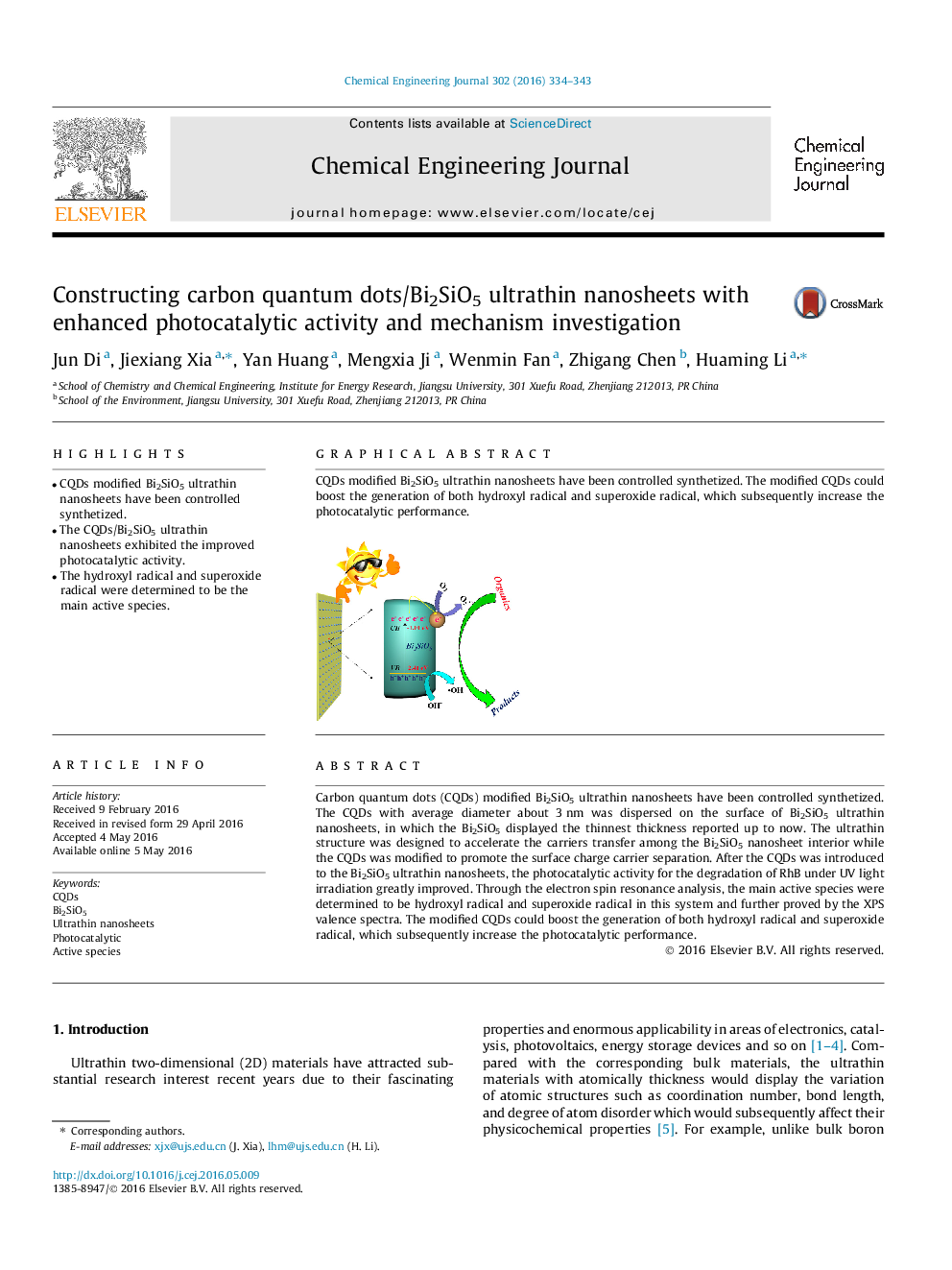| Article ID | Journal | Published Year | Pages | File Type |
|---|---|---|---|---|
| 145352 | Chemical Engineering Journal | 2016 | 10 Pages |
•CQDs modified Bi2SiO5 ultrathin nanosheets have been controlled synthetized.•The CQDs/Bi2SiO5 ultrathin nanosheets exhibited the improved photocatalytic activity.•The hydroxyl radical and superoxide radical were determined to be the main active species.
Carbon quantum dots (CQDs) modified Bi2SiO5 ultrathin nanosheets have been controlled synthetized. The CQDs with average diameter about 3 nm was dispersed on the surface of Bi2SiO5 ultrathin nanosheets, in which the Bi2SiO5 displayed the thinnest thickness reported up to now. The ultrathin structure was designed to accelerate the carriers transfer among the Bi2SiO5 nanosheet interior while the CQDs was modified to promote the surface charge carrier separation. After the CQDs was introduced to the Bi2SiO5 ultrathin nanosheets, the photocatalytic activity for the degradation of RhB under UV light irradiation greatly improved. Through the electron spin resonance analysis, the main active species were determined to be hydroxyl radical and superoxide radical in this system and further proved by the XPS valence spectra. The modified CQDs could boost the generation of both hydroxyl radical and superoxide radical, which subsequently increase the photocatalytic performance.
Graphical abstractCQDs modified Bi2SiO5 ultrathin nanosheets have been controlled synthetized. The modified CQDs could boost the generation of both hydroxyl radical and superoxide radical, which subsequently increase the photocatalytic performance.Figure optionsDownload full-size imageDownload as PowerPoint slide
